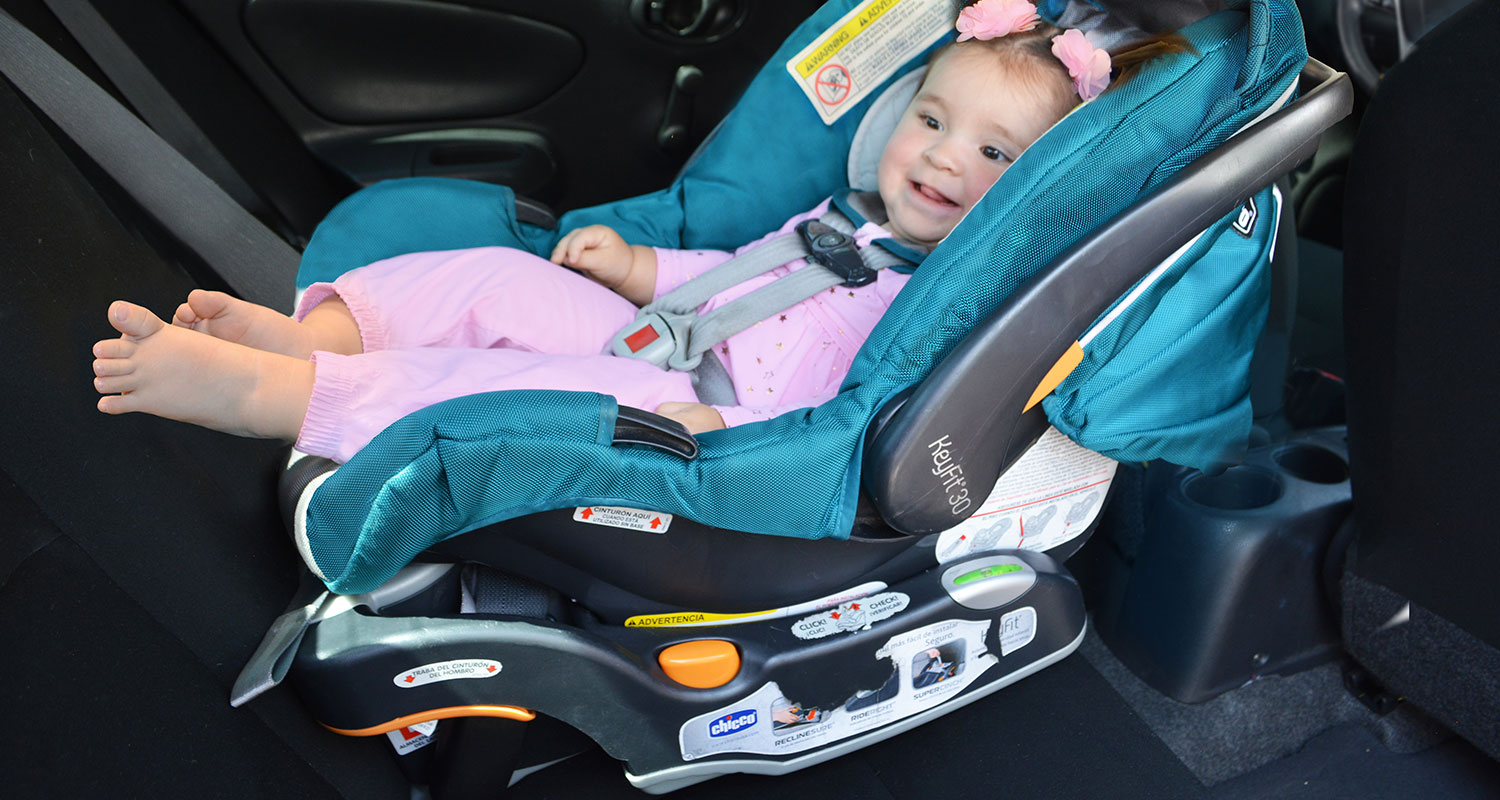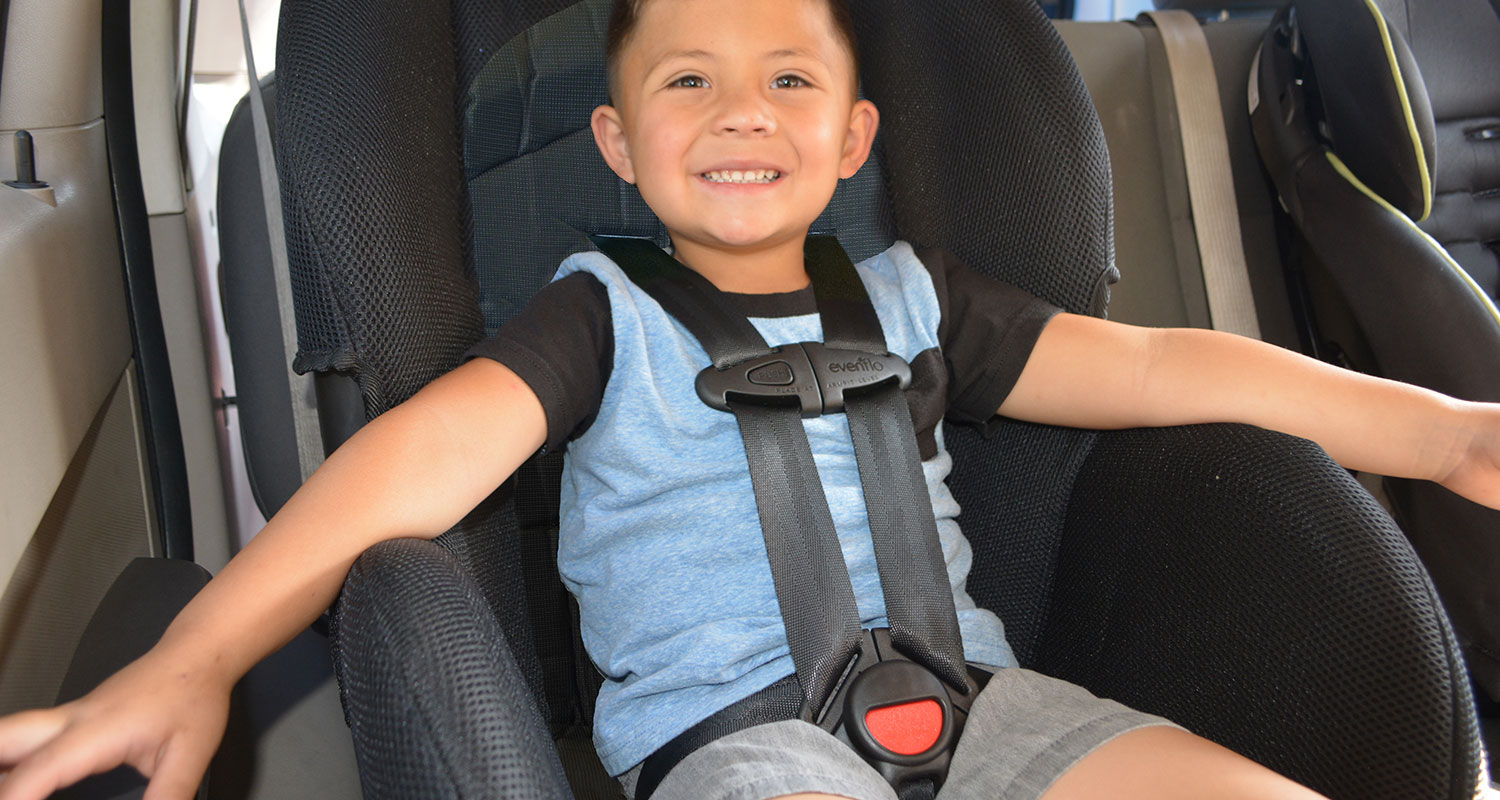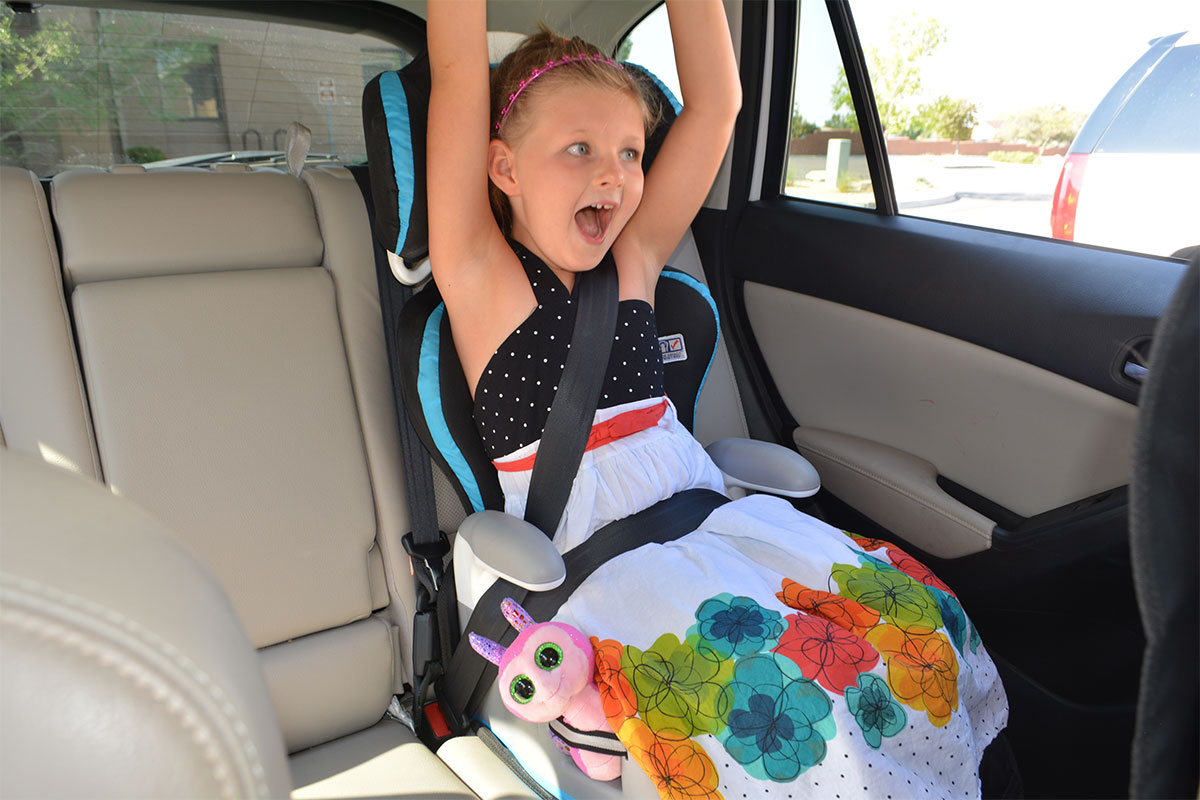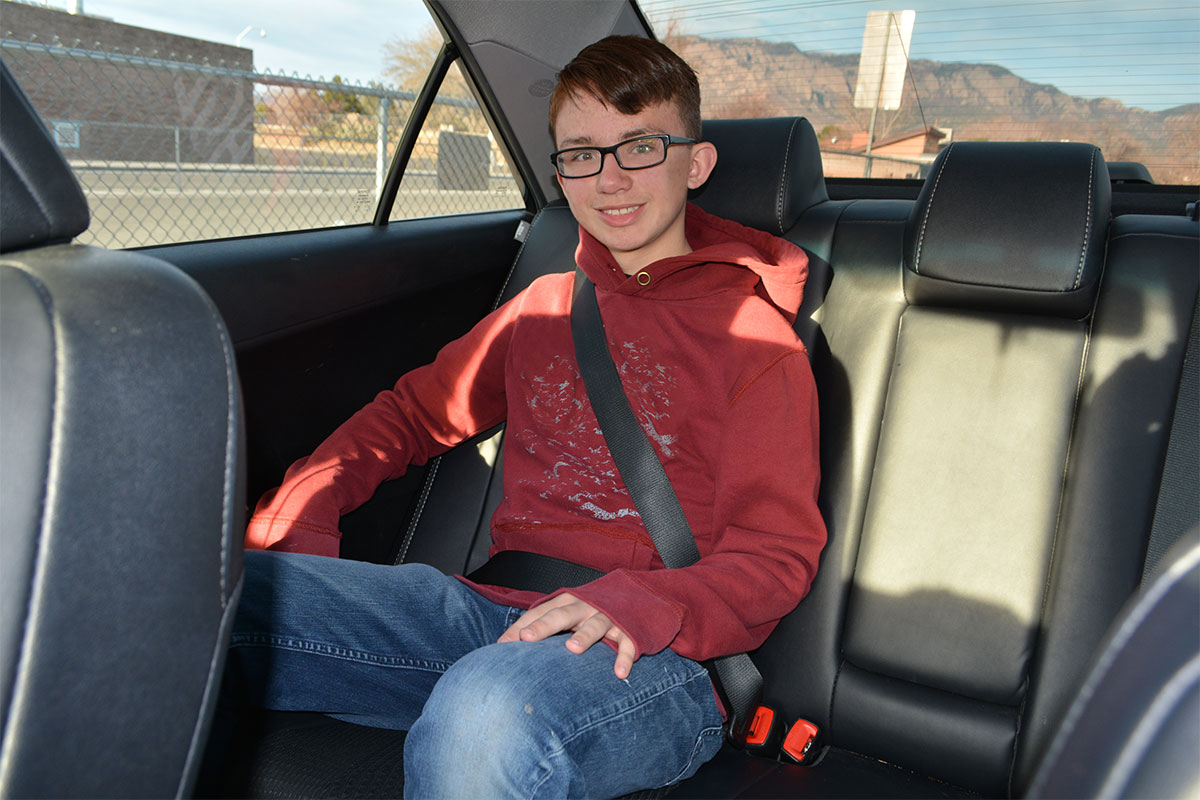Car Seat Basics
There are several types of car seats available today.
But parents and caregivers want to know, which one is best? The best answer is simple – the right seat is the one that fits your child, your vehicle, and the one that you can use correctly every time.

Rear-Facing Car Seats
Young children have heavy heads and small, flexible bodies. Facing the back of a vehicle in a rear-facing car seat is safer than facing the front. Rear-facing seats are used for infants and toddlers in the rear-facing position only. This supports your child’s entire head, neck, and back in the event of a crash. New Mexico law requires following all manufacturer instructions, including specific height, weight, and age requirements. The best way to keep your child safe is to keep them in a rear-facing position for as long as possible or until the child has exceeded either the height or weight requirements of the seat.
Forward-Facing Car Seats
As children grow, they still need extra protection. The straps on a forward-facing car seat adjust to fit small children well and help spread crash energy across the strongest part of a child’s body – the shoulders, chest, and hips. Children should ride in forward-facing car seats with a harness until they reach the weight or height limits of the seat. Be sure to check the labels on the side of your car seat for these requirements.


Booster Seats
Older children aren’t fully protected by seat belts that don’t fit correctly, and that doesn’t happen until most kids are 10- to 12- years old. Seat belts need to be on the strong and bony parts of a child – not on the soft belly or neck—and the shoulder belt must never be behind a child’s back or under an arm. A booster seat raises the child up and guides the seat belt to fit more comfortably and safely across the child’s hips and collar bone. Booster seats must be used with a lap and shoulder belt. Recommended minimum and maximum height and weight limits vary, so check the manufacturer’s instructions.
Seat Belts
Children who fit correctly in seat belts should use both lap and shoulder belts. To see if the belt fits correctly, have you child sit all the way back on the vehicle seat and buckle the belt. The lap belt should stay snug below the hip bones, touching the upper thighs, and the shoulder belt should stay against the chest and shoulder. Your child’s knees should also bend naturally over the vehicle seat edge to help keep the belt in position. If the seat belt sits across the belly or neck it does not fit correctly and could contribute to injuries. In this case, the child should still ride with a booster seat.

Are You Using the Right Seat?
We can help you know for sure if the seat you’re using is the best fit for your child. Make an appointment for an upcoming Car Seat Inspection Event. Visit our calendar for a list of upcoming car seat inspection events or call 1-800-231-6143 to make an appointment today.
Contact
Location
Administrative Office
9400 Holly Avenue NE, Suite 201
Albuquerque, NM 87122
Injury Prevention Resource Center
3220 Richards Lane, Suite A
Santa Fe, NM 87505
